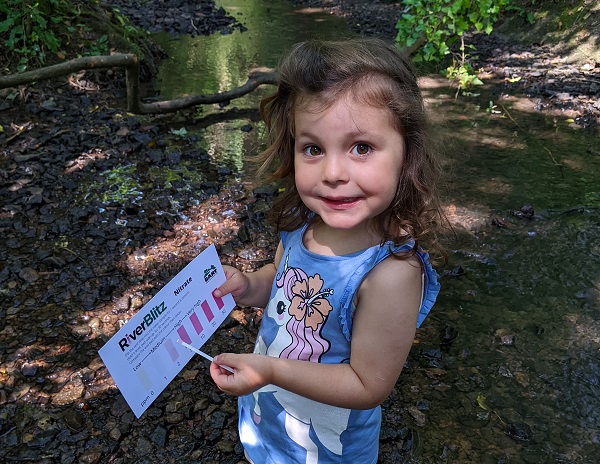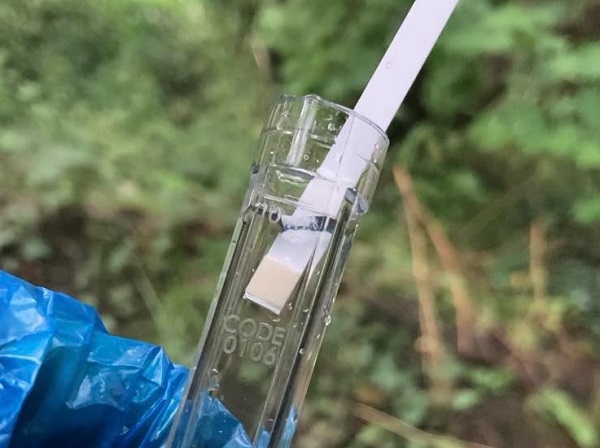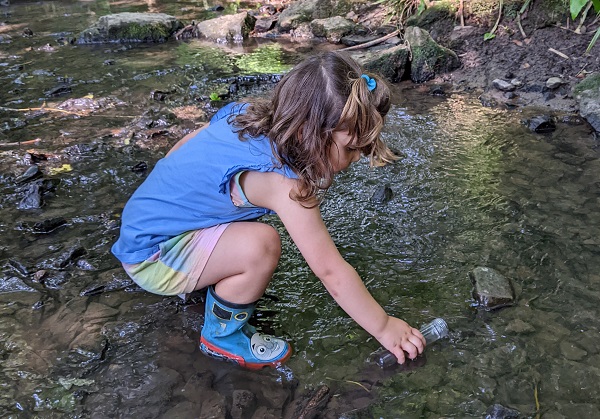HIGH levels of pollutants have been found in the River Frome, which passes through Chipping Sodbury and Yate on its way to Bristol.
Measurements of phosphate and nitrate nutrients were carried out by a team of 193 volunteer ‘citizen scientists’ for the Bristol Avon Rivers Trust as part of its RiverBlitz event.
They took sampling kits and monitored rivers across the Bristol Avon catchment, including the Frome and tributaries, during a weekend in July.
The river conservation charity analysed the 293 samples, and its results show all of those collected in Yate and most in Chipping Sodbury showed high levels of nitrates, as did those further downstream in Frampton Cotterell and Winterbourne, with some having high or medium levels of phosphates.
Both chemicals are pollutants which can have harmful effects on wildlife.
Levels of both pollutants were high in the Frome at a sampling site near the Wickwar Road car park in Chipping Sodbury. High levels of nitrates and medium levels of phosphates were found in the river near Cineworld in Yate, Jubilee Park in Sodbury and in the Ladden Brook in Iron Acton.
High levels of nitrates and low levels of phosphates were found in by the footbridge from the Waitrose car park in Sodbury, Templar Park and Dean Road in Yate.
Invasive plants giant hogweed and Himalayan balsam were found in the river near the Cineworld car park.

BART says pollutants can enter streams and rivers from a variety of sources, including pesticides and fertilisers washing off fields, livestock waste, sewage overflows and treated sewage discharges.
Higher levels of nitrates in upstream areas are likely to be linked to farming; phosphate levels – linked to sewage and urban run-off as well as agriculture – were higher downstream.
Survey is a ‘snapshot’ of pollution on one day
BART chief executive Simon Hunter said: “As this presents just a single snapshot of phosphate and nitrate data, it is challenging to single out the cause and source of the particular issue.
“However, what our citizen science data does show is that there is a problem regarding the levels of nutrients entering our watercourse at that given time – in the case of the 2023 Blitz, following a significant rainfall event following a very dry period in summer.
“The causes of high nutrient levels are likely to be as a result of water industry discharges as well as misconceptions from homes and possibly businesses, and impacts from agricultural land-use too.”
A map produced by the Rivers Trust nationally did not record any overflows into the Frome from Wessex Water storm drains in Yate and Sodbury but recorded 248 downstream in Frampton Cotterell, Watley’s End and Winterbourne, where the river passes on its way from Dodington to Bristol docks, last year.

BART says 89% of sample locations across the region recorded high levels of nutrients, with only one out of 293 showing a low concentration: 83% of samples were high in nitrates and 42% high in phosphates, with levels of both higher than average over previous surveys.
Water company ‘committed’ to reducing sewer overflows
Wessex Water, which is responsible for the region’s waste water, recently featured in a BBC investigation into sewage releases into watercourses during dry weather last year.
A Wessex Water spokesperson said none of the sites were in the Frome Valley.
The spokesperson said: “Phosphates are the main pollutant in the Bristol Avon catchments. Wessex Water has already removed 100 tonnes of phosphate per year from water recycling centres and we’re spending a further £57 million to remove another 70 tonnes by 2025.
“The remaining phosphates largely come from agriculture and urban run-off, so we’re working with farmers and other landowners to reduce this through use of nature-based solutions.”
The company has 121 sewage treatment works, 714 pumping stations and 670 storm overflows within the River Avon catchment, which includes the Frome.
The spokesperson said it has spent £15 million on the Frome Valley relief sewer scheme, completed in 2018, which “provides additional sewerage capacity for new and future development in the area and safeguards river quality”.
A map showing where samples were taken can be found at bristolavonriverstrust.org/riverblitz.
Earlier this year the Voice reported that researchers from the University of the West of England found “shocking” levels of potentially harmful coliform bacteria – the family containing harmful E. coli – in the Frome in Frampton Cotterell.
Countryside campaigners say a recent spotting of an otter in the River Frome near Iron Acton proves the importance of protecting our waterways and the wildlife that use them.
The otter was filmed swimming in the river at Algars Mill close to the Frampton End Lane bridge in September.
Campaign group VALID (Villagers Against Local Inappropriate Development), which has reactivated in recent months, amid concerns about future developments in Frampton Cotterell and Coalpit Heath, organised a walk on the Frome Valley walkway which passed Algars Mill shortly after the sighting by a resident, who captured the otter on video.
They have teamed up with Frampton Cotterell Nature Group to campaign to save the countryside and Green Belt, both for local residents and wildlife.
Frampton Nature Group founder David Hanks said: “It’s great to see otters there – my hope is that the otters will displace the non-native minks, and allow water voles to return.”
The next Save Our Countryside walk will start from opposite the Frome Valley Medical Centre, Bristol Road, Frampton Cotterell, at 2.30pm on October 14.


